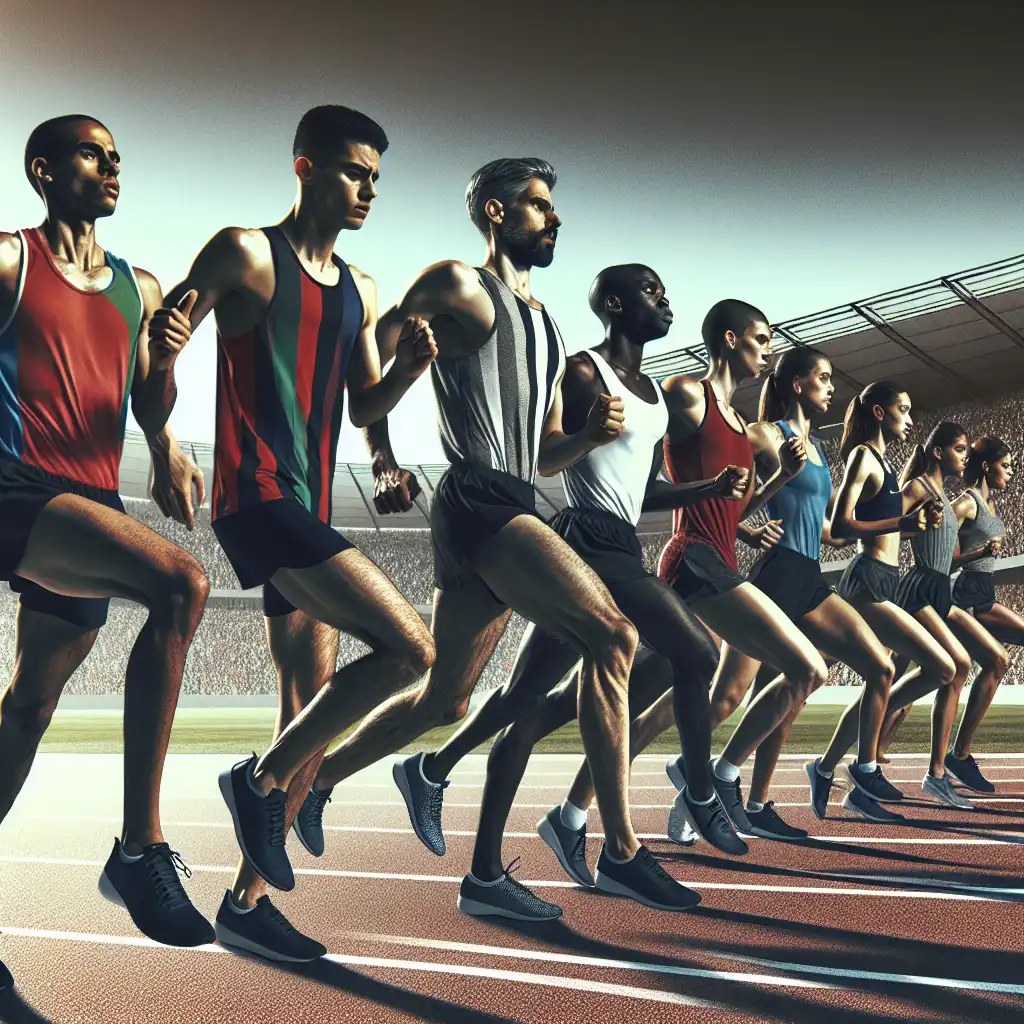The Art and Science of Race Walking: Striding with Precision and Passion
Race walking is a unique and captivating sport that combines the endurance of long-distance running with the technical precision of an art form. With turbocharged toes pacing with purpose and athletes striding with pride, race walking is a discipline that demands both speed and meticulous technique. These professionals have no time to stroll as they master their race one step at a time, transforming what may seem like an ordinary walk into a display of athletic prowess.
Table of Contents
ToggleUnderstanding Race Walking
Race walking, often overshadowed by more mainstream athletic events, deserves its place in the spotlight. Unlike running, race walking requires one foot to be in contact with the ground at all times, a rule strictly enforced by judges during competitions. This continuous ground contact, coupled with a straight-leg requirement, sets race walking apart from other track and field events.
The Mechanics of Race Walking
Race walking is governed by two primary rules:
- One foot must always be in contact with the ground.
- The leading leg must remain straight from the moment of first contact until it passes under the body.
These rules necessitate a unique walking technique that involves rapid foot turnover and a highly efficient stride. Athletes must develop strong core and leg muscles to maintain the correct posture and avoid penalties for form violations.
Training and Preparation
Race walkers undergo rigorous training regimens to build the endurance and strength required for competition. Their training includes:
- Long-distance walking: Building cardiovascular endurance through extended walking sessions.
- Strength training: Focusing on core, leg, and hip muscles to maintain proper form.
- Technique drills: Practicing specific walking techniques to adhere to race rules and avoid disqualification.
The Competitive Landscape of Race Walking
Race walking features prominently in major athletic events such as the Olympics, World Championships, and regional competitions. Athletes from around the globe compete in various distances, typically ranging from 20 kilometers to 50 kilometers.
Major Competitions
- Olympic Games: Race walking has been a part of the Olympics since 1904 for men and 1992 for women. The inclusion of both 20 km and 50 km events highlights the sport’s endurance aspect.
- World Athletics Championships: This event features some of the world’s best race walkers competing in 20 km and 50 km races.
- Regional and National Championships: These events serve as platforms for emerging talent and provide athletes with opportunities to qualify for international competitions.
The Challenges and Rewards of Race Walking
Race walking presents unique challenges that set it apart from other athletics events. The sport requires not only physical endurance but also mental fortitude and technical precision. The rewards, however, are equally significant, offering athletes a chance to excel in a niche discipline and gain recognition on a global stage.
Common Challenges
- Technical Violations: Maintaining proper form is crucial to avoid penalties and disqualification.
- Physical Strain: The unique walking technique can lead to specific injuries, such as shin splints and hip flexor strains.
- Mental Toughness: Enduring long distances while maintaining form requires immense mental strength.
Rewards
- Global Recognition: Successful race walkers earn accolades and respect in the athletic community.
- Personal Achievement: The discipline and perseverance required for race walking translate into personal growth and accomplishment.
- Community and Support: Athletes often form close-knit communities, providing support and camaraderie.
FAQs About Race Walking
What is race walking?
Race walking is an athletic event where competitors must maintain contact with the ground at all times and keep the leading leg straight from first contact until it passes under the body.
How is race walking different from running?
Unlike running, race walking requires one foot to be in contact with the ground at all times and involves a straight-leg rule, making it a more technical and regulated sport.
What distances are common in race walking competitions?
Common race walking distances include 20 kilometers and 50 kilometers, with variations in regional and national events.
What are the primary rules of race walking?
The two primary rules are continuous ground contact and maintaining a straight leading leg during the stride.
How do athletes train for race walking?
Athletes train through a combination of long-distance walking, strength training, and technique drills to build endurance, strength, and precision.
What are common injuries in race walking?
Common injuries include shin splints, hip flexor strains, and other overuse injuries due to the repetitive and technical nature of the sport.
Conclusion
Race walking is a fascinating and demanding sport that blends endurance, technique, and mental strength. From understanding its unique mechanics to exploring the competitive landscape and addressing common challenges, race walking offers a compelling journey for athletes and enthusiasts alike. Whether you’re a seasoned race walker or a curious newcomer, the sport provides an opportunity to push boundaries and achieve extraordinary feats. As the community of race walkers continues to grow, the recognition and appreciation of this discipline are sure to expand, highlighting the dedication and skill of these remarkable athletes.










